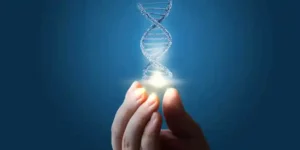GS II-Health

Context:
A recent study by CSIR-CCMB highlights that endogamy plays a significant role in population-specific genetic disorders and influences drug metabolism across India.
Understanding Endogamy:
Endogamy refers to the practice of marrying within a defined social, caste, ethnic, religious, or tribal group, often reinforced by cultural or legal norms.
Types of Endogamy:
- Caste-Based: Common in India and Nepal, where marriage is restricted within one’s caste or social group.
- Ethnic Endogamy: Practiced by specific ethnic communities such as Polynesians and Armenians.
- Religious Endogamy: Seen in religious groups like Orthodox Jews, Mormons, and the Amish.
- Tribal Endogamy: Found among indigenous communities like the Tartharol clan of the Toda tribe in the Nilgiri Hills.
- Royal Endogamy: Historically followed in royal families to preserve dynastic lineage.
Purpose of Endogamy:
- Ensures cultural continuity and group identity.
- Strengthens social and kinship bonds.
- Maintains hierarchical structures and economic stability.
- Prevents external influences and promotes social exclusivity.
Key Findings from the CSIR-CCMB Study:
- Genetic Disorders: Endogamy increases the prevalence of hereditary diseases within specific populations.
- Inbreeding Trends: Southern Indian communities exhibit inbreeding rates as high as 60%.
- Disease Susceptibility: Conditions like Ankylosing Spondylitis are linked to genetic markers such as ‘HLA-B27:04 risk allele’ in the Reddy community of Andhra Pradesh.
- Impact on Drug Response: Genetic diversity affects how individuals metabolize drugs like Tacrolimus (used in organ transplants) and Warfarin (a blood thinner), emphasizing the need for personalized medical approaches.
- Genetic Screening: Early detection of hereditary diseases is crucial for effective management and prevention.
Health Risks Associated with Endogamy:
- Inbreeding Depression: Increases the likelihood of recessive genetic disorders and weakens immune responses.
- Limited Genetic Variation: Reduces adaptability to environmental changes, increasing vulnerability to diseases.
- Accumulation of Mutations: Over generations, harmful genetic mutations become more concentrated.
- Population-Specific Health Concerns: Genetic clustering leads to unique hereditary disease patterns within certain groups.




